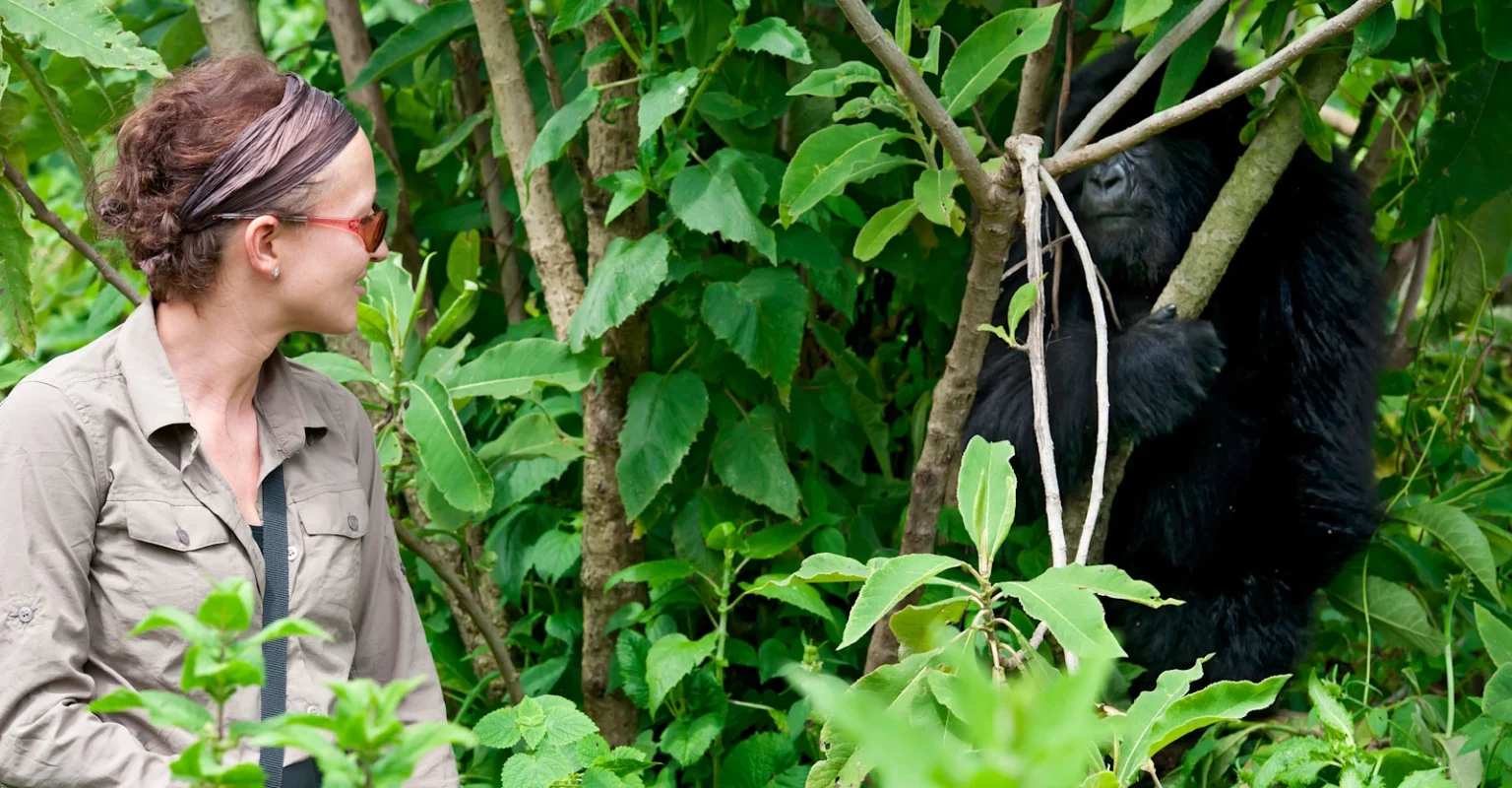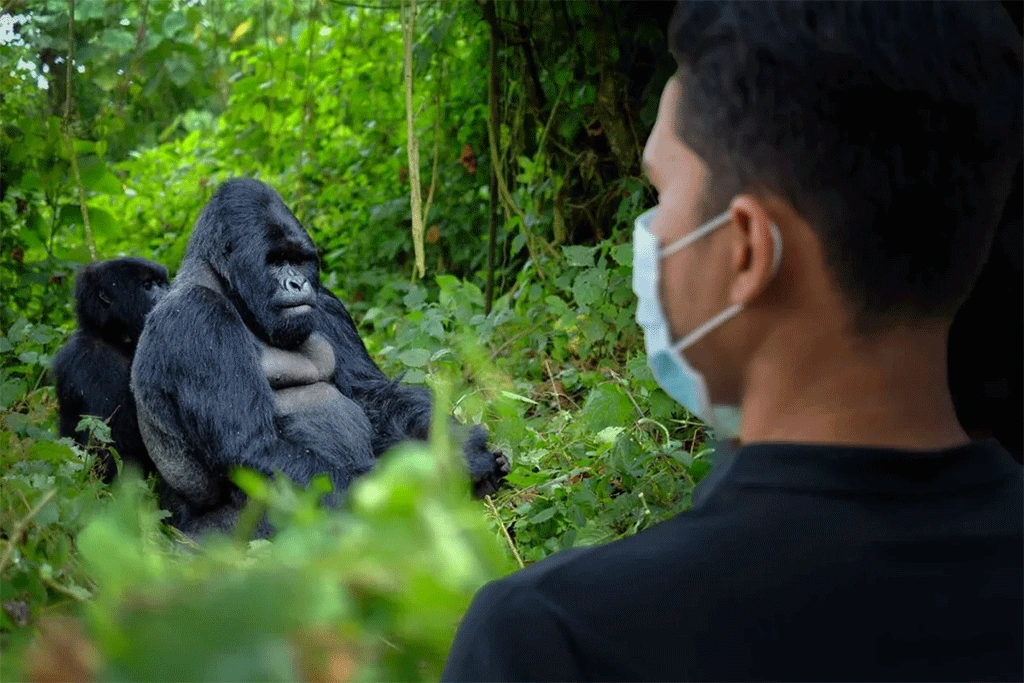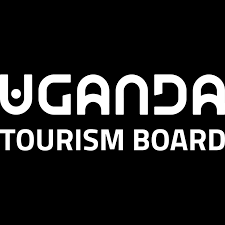What To Pack for A Safari in Kenya?
What to pack for gorilla trekking is mainly about having the right clothes and gear for muddy trails, thick forests, and rainy weather. Do you wonder what shoes to wear or what else to carry? This simple gorilla trekking packing list will help you prepare well and enjoy every moment of your amazing journey!
Clothes to Pack for Gorilla Trekking
Proper clothing is key to ensuring a safe, comfortable, and enjoyable gorilla trekking experience.
The terrain in gorilla parks like Bwindi Impenetrable National Park and Volcanoes National Park can be tough, with dense forests, muddy trails, and unpredictable weather.
Wearing the right gear will keep you protected from scratches, insects, and rain while helping you stay dry and comfortable throughout your trek.

1. Lightweight, Neutral-Coloured Clothing
Choose light, breathable clothing in natural colors like green, brown, or beige to help you blend into the forest and avoid attracting insects.
Opt for quick-drying fabrics, which are ideal for staying comfortable during rain, sweat, or muddy treks.
Pack long-sleeved, quick-drying shirts and lightweight, durable hiking trousers to protect your skin from scratches and bugs, along with comfortable cotton clothes for relaxing at your lodge.
While there is no strict dress code in Rwanda or Uganda, women are advised to dress modestly when visiting towns, villages, or cities to respect local customs.
2. Skip the Shorts
Wearing shorts might seem like a good idea, but it’s not!
Gorilla trekking trails are full of stinging nettles, thorny bushes, and biting insects.
You will often push through thick vegetation, and shorts will leave your skin exposed to scratches and bites.
Long trousers and long-sleeved shirts are your best defense to stay comfortable and protected throughout the trek.
3. Hiking Boots or Shoes
Choose hiking boots or shoes that are already well broken in, as new footwear can cause blisters and discomfort during long treks.
Your shoes should be comfortable for extended walking and provide excellent ankle support to keep you stable on uneven, muddy, and steep trails.
Opt for waterproof or quick-drying materials to handle wet conditions and prevent your feet from becoming soggy and cold.
Non-slip soles are essential for safe footing on slippery terrain. Durable, sturdy footwear is crucial for protecting your feet and ensuring comfort throughout your gorilla trekking adventure.
4. Gaiters or Long Socks
Protect your ankles and lower legs from biting ants, insects, thorny plants, and mud by wearing calf-length or long socks paired with durable gaiters that cover your boots and lower legs.
Gaiters create a strong barrier against scratches, insect bites, and dirt, helping to keep your feet dry and comfortable throughout the trek.
While they may not be the most fashionable, their practical benefits are essential for a safer and more comfortable gorilla trekking experience.
5. Rain Jacket Or Poncho
The rainforests where gorillas live are known for sudden, heavy downpours, so having reliable rain protection is a must.
Pack a lightweight, fully waterproof jacket with a hood that offers breathability and quick-drying materials to keep you dry without overheating.
Alternatively, a durable rain poncho is a great option—it’s easy to pack, covers both you and your backpack, and provides excellent protection during unexpected showers.

6. Gloves
A sturdy pair of gloves is essential for pushing aside branches and thick brush along the trail.
They protect your hands from scratches, thorns, and sharp plants, keep your hands dry and warm—especially useful when taking photos—and provide extra grip on slippery or wet surfaces.
Choose gloves that are durable, breathable, and comfortable to wear for long periods, but not so bulky that they make handling your camera or gear difficult.
7. Safari Hat
A wide-brimmed safari hat is essential for protecting you from both the strong sun and sudden rain showers common in gorilla trekking areas.
It shields your face, neck, and ears from harmful UV rays, helping to prevent sunburn and heat exhaustion during long hikes.
At the same time, it offers some protection from light rain, keeping you drier and more comfortable.
Choose a hat made from lightweight, quick-drying material with good ventilation to stay cool.
A hat with a chin strap is also helpful to keep it secure on windy trails.
8. Sunglasses
Choose sunglasses with proper UV protection or polarized lenses to shield your eyes from the bright sunlight and glare, especially in open areas along the trail.
Protecting your eyes helps prevent strain and discomfort during long hours outdoors.
If you wear prescription glasses, keep in mind they can fog up in the humid jungle, which may make it harder to see clearly.
If possible, consider wearing contact lenses during the trek for a clearer, unobstructed view of the gorillas and your surroundings.
9. Face Mask
Because gorillas share about 98% of their DNA with humans, they are very vulnerable to human illnesses.
To protect these incredible animals—and yourself—you need to wear a face mask whenever you are close to them.
Choose a comfortable, breathable mask that you can wear for the entire trek without discomfort, helping to keep both you and the gorillas safe from germs and infections.
10. Hair Ties
Keep your hair tied back during gorilla trekking to prevent it from blocking your view and getting caught in branches or plants.
Tying your hair also helps manage frizz caused by the humid rainforest environment.
Use strong, comfortable hair ties or bands that won’t easily slip out, so you can fully focus on and enjoy your unforgettable time with the gorillas without distractions.

More Important Items to Include in Your Gorilla Trekking Packing List
After packing the right clothes, be sure to bring a few extra essentials that will make your gorilla trek safer, more comfortable, and much more enjoyable.
1. Camera
You will want to capture your once-in-a-lifetime gorilla encounter, but remember to keep your camera gear light and practical.
Large zoom lenses can be heavy and difficult to manage in the dense rainforest, so a mid-size camera or a good smartphone is usually best for most photos.
Don’t forget to bring a soft cloth to wipe away moisture or fog that often builds up in the humid forest.
Also, make sure to turn off your flash, as flash photography is not allowed when photographing gorillas. Read more about gorilla trekking photography tips
2. A Good Backpack
Choose a small, comfortable backpack to carry your essentials like water, snacks, camera, and rain jacket during your trek.
Opt for a water-resistant backpack or use a rain cover or dry bag inside to keep your electronics and valuables safe and dry, especially in the wet and humid rainforest conditions.
3. Walking Stick or Trekking Pole
The trails can be steep, muddy, and uneven, so a walking stick or trekking pole is very helpful.
It provides better balance on slippery or rough ground and helps you gently move aside vines and plants along the way.
Many lodges offer complimentary walking sticks, but if you prefer something lighter or foldable, it’s a good idea to bring your own for extra comfort and convenience.
4. A Bit of Cash
While tipping is optional, it’s always appreciated by your guides and porters after the trek.
You can bring small bills in local currency or US dollars, as these are easiest to use.
To keep your money safe and organized, store it in a zippered pouch inside your bag, so it’s easy to access when needed.
5. Water and Snacks
Trekking through the mountain rainforest where gorillas live can be very tiring, so staying hydrated and energized is important.
While Greenway Nature Tours provides water and light snacks, it’s a good idea to bring your own too—such as energy bars, trail mix, or electrolyte tablets or powder.
This is especially helpful if you have special dietary needs or prefer a particular snack to keep you going during the trek.

Health & Safety Tips for Gorilla Trekking
To ensure a safe and enjoyable gorilla trekking experience, keep these important health and safety tips in mind:
- Vaccinations: Consult your doctor well before your trip to get recommended vaccinations, such as yellow fever and typhoid.
- Insect Repellent: Use a strong insect repellent to protect yourself from mosquitoes and other biting insects.
- Stay Hydrated: Drink plenty of water before and during the trek to prevent dehydration, especially at higher altitudes.
- Pace Yourself: Gorilla trekking can be physically demanding and takes place at high altitude. Walk at a comfortable pace and take breaks whenever you need to.
- Follow Your Guide’s Instructions: Always listen carefully to your guide’s safety advice, especially when near the gorillas. Maintain a safe distance and avoid sudden movements to protect both yourself and the animals.
- Avoid Trekking if Sick: If you have any symptoms of illness, such as a cold or flu, postpone your trek. Gorillas are very susceptible to human diseases, so protecting their health is essential.
What NOT to Bring on a Gorilla Trek
Knowing what to leave behind is just as important as what to pack. To ensure a smooth and respectful gorilla trekking experience, avoid these items:
- Bright-Colored Clothing: Choose earthy, neutral tones instead—bright colors can startle or disturb the gorillas and other wildlife.
- Camouflage Clothing: Often linked to military use in some African countries, camouflage should be avoided to prevent misunderstandings.
- Strong Perfumes or Scents: These can attract insects or distract the animals, so it’s best to skip any strong-smelling lotions or sprays.
- Drones: Drones are strictly prohibited in national parks and during gorilla trekking to protect the wildlife and maintain the natural environment.
- Flash Photography: Using flash near gorillas is banned as it can harm their sensitive eyes and disturb their behavior.
- Heavy or Unnecessary Gear: You’ll be carrying your bag for hours on uneven, muddy trails, so pack only what’s essential and keep your load light for comfort and ease.
Gorilla trekking Tours
Our Trusted Partners






